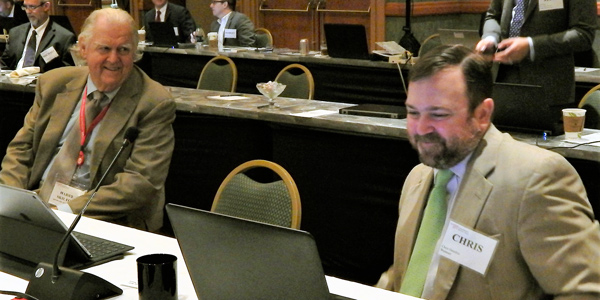By Tom Kleckner
OMAHA, Neb. — When SPP CEO Nick Brown welcomed Walmart as one of the organization’s newest members last month, he made a point of noting the company was the first in the RTO’s large retail customer sector, which has been vacant since 2003.
A big deal for SPP, maybe, but old hat for Walmart. The retail giant is a member of every U.S. grid operator except CAISO, though that could eventually change.
“It depends on the regulatory environment there,” Chris Hendrix, Walmart’s director of markets and compliance, told RTO Insider.
As it is, Walmart is involved in most states that are open to retail competition, along with markets in Canada and the U.K., the latter through its Asda affiliate. Other markets, national and international, could follow “depending on how they’re structured,” Hendrix said.
“It’ll be easier for me to tell you what markets we aren’t in,” he said, ticking off Delaware, Michigan, Rhode Island and D.C.
Walmart’s foray into electricity markets began simply enough in 2003, when it joined ERCOT as a retail electric provider (REP) through its Texas Retail Energy entity. The wholly owned company has a customer of one, procuring power for Walmart, Sam’s Club and other subsidiaries and their many stores and distribution centers.
“Initially, it was all about lowering our costs,” Hendrix said. “We’re like other REPs [in Texas], only we don’t have sales people or customer service reps.”
Hendrix, who brought 15 years of energy experience in both the gas and electricity sectors when he joined Walmart in 2003, is part of a team of 15 former energy insiders and company associates “doing all types of things.”
Everything, that is, except sales. There’s no need to market outside the Walmart family of companies.
“We can be in control of our own destiny,” Hendrix said. “We can buy power how and when we want to, as opposed to being beholden to somebody else’s buying schedule at the utility, or the market products they can come up with. We access the wholesale market when and how we see fit.”
No Middleman
Hendrix said Walmart benefits from its membership in SPP and other grid operators by gaining access to hourly pricing and managing it for the company’s needs.
“We cut out the middleman, and we leverage our credit as Walmart,” he said. “The cost savings come from leveraging our credit, as well as operational efficiencies from having less people and services that we have to offer.”
Asked to quantify Walmart’s energy savings, Hendrix demurred.
“Cutting out the middleman’s margin is basically the savings,” he said. “Our goal is everyday low prices, and along with that, everyday low costs. Anything we can do to lower the cost helps the business opportunities of Walmart.”
At the same time, Walmart’s involvement with RTOs and ISOs has been instrumental in the company’s sustainability program. The retailer has been working toward a goal of operating with 100% renewable energy since 2005.
Walmart has been the eighth largest corporate purchaser of wind and solar power globally since 2008 with 781 MW, according to Bloomberg New Energy Finance, and it gets about 28% of its electricity from renewables. Just before the presidential election in 2016, the company announced it intended to get half its power from wind and solar energy by 2025, passing Google as the world’s top buyer of renewable power.
Nothing has changed, despite the Trump administration’s lack of support for renewables.
“Our goals and objectives have not changed at all since they were first introduced … and more specifically, in November before the election,” Hendrix said. “By the time it’s all finished, 35% of our load in Texas will come from wind. That’s a significant number, but it’s still not a 50% number. We’re looking to do a lot more, because we can’t get there with on-site solar. It has to be large-scale solar and large-scale wind.”
Hendrix said one of the side benefits of participating in energy markets is purchasing renewables on a wholesale basis. To participate in most of the markets it’s in, Walmart had to become a member of the grid operators. SPP doesn’t have that same requirement, but its 18 GW of installed wind capacity was too enticing to pass up.
“As we do a lot more renewables, a lot of that … is in the SPP territory,” he said.
Walmart’s annual $6,000 membership fee is a small price to pay. As the executive responsible for regulatory and legislative matters for the company’s retail and wholesale energy businesses, Hendrix also gets to have a vote in SPP’s stakeholder process.
“We decided, as we have been in all those other markets and we have seen the benefits of being on those committees, it made sense to join SPP,” he said. “We try to understand what’s happening with the ISO’s policies and try to steer them in the direction that we think is best. We’ll always advocate for competition and free markets.”
SPP’s hefty exit fee — about $673,000 for non-transmission owners, the RTO estimates — has scared away some potential members, but not Walmart.
“We don’t intend to go anywhere,” Hendrix said. “It works out to $6,000 a year. We think we get the benefit of being involved in the market.”





